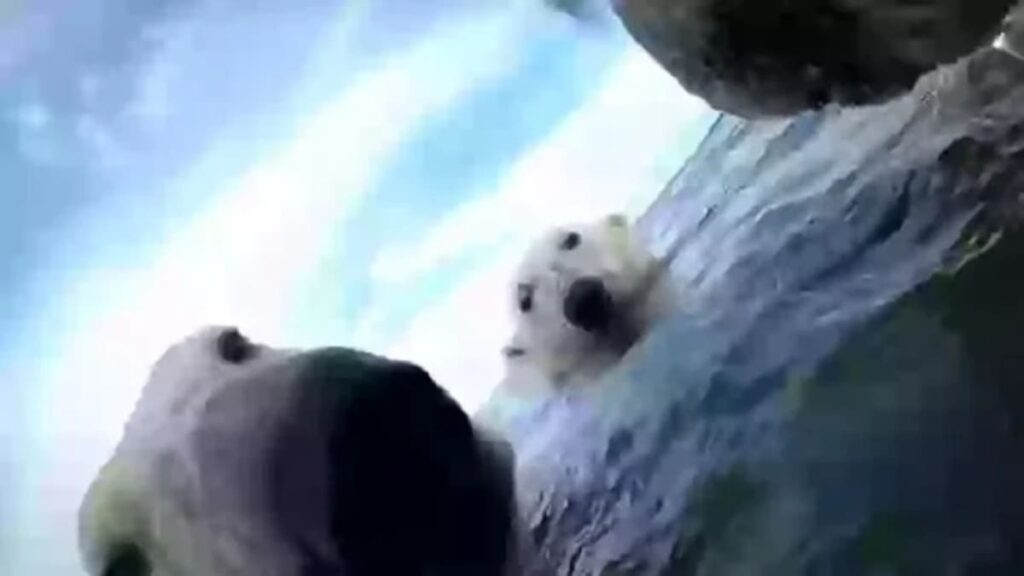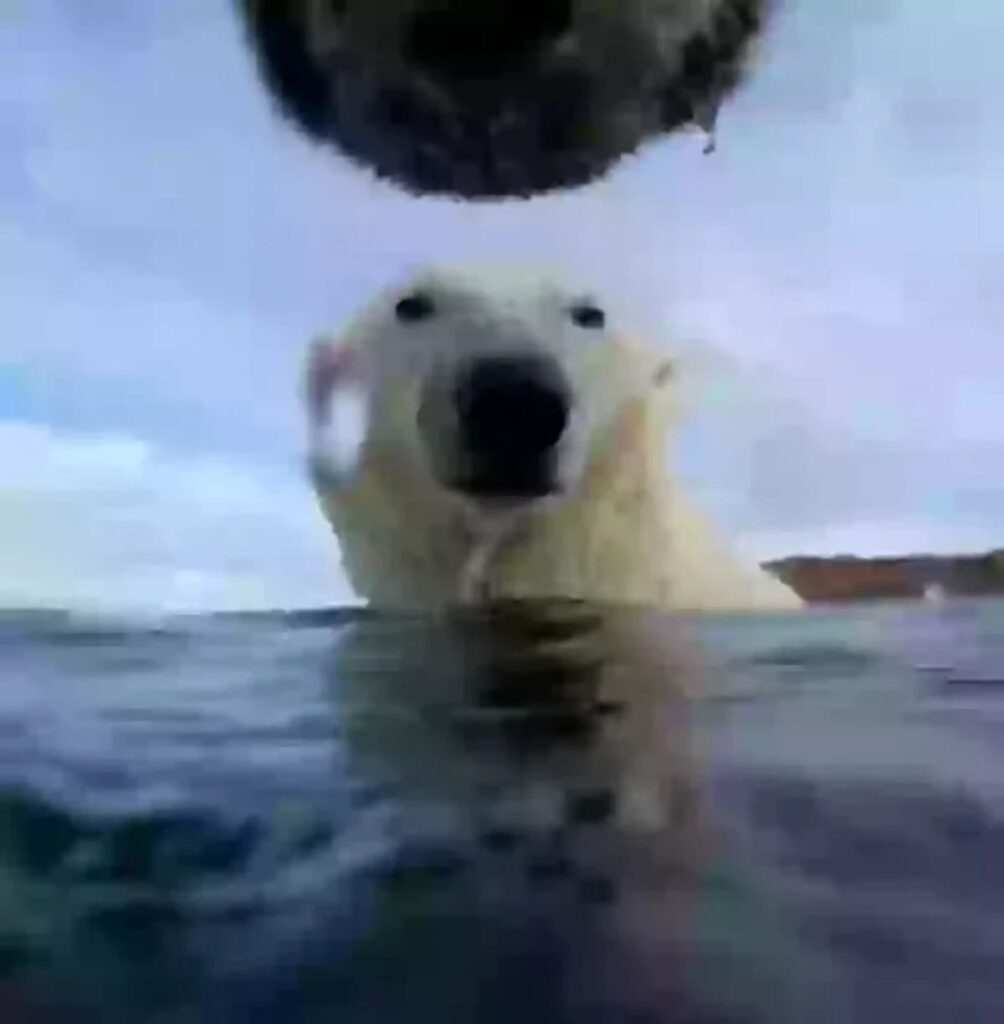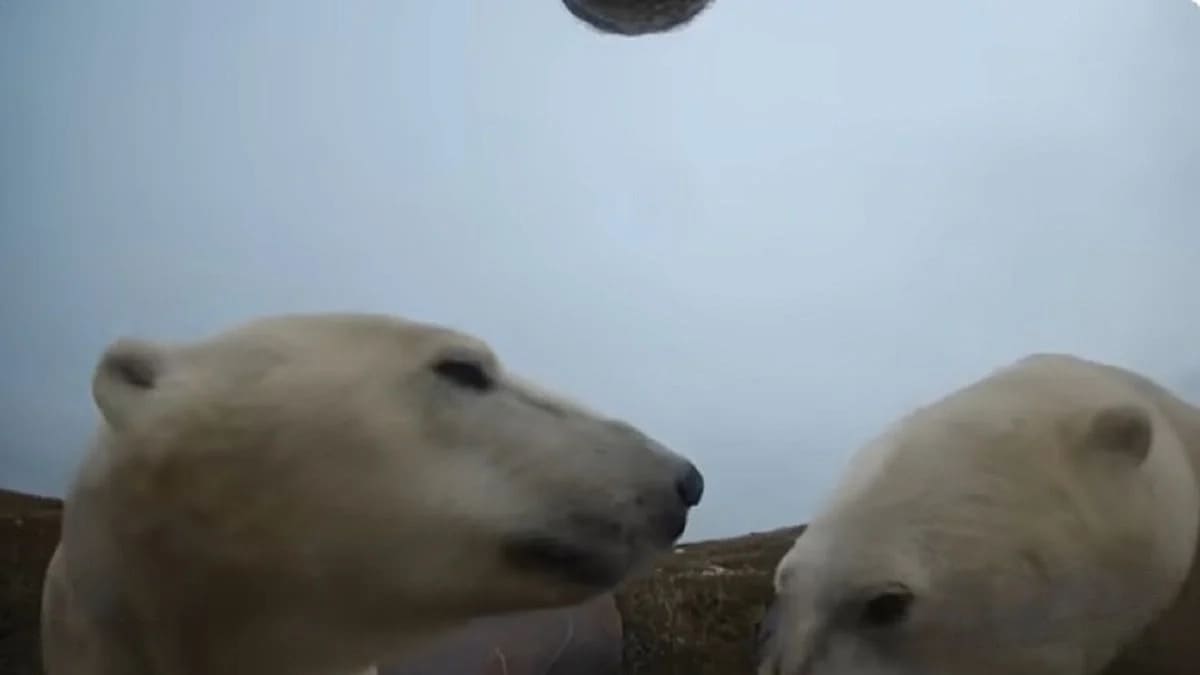They wanted to get closer to the truth about how climate change is impacting the Arctic’s most iconic predator. What they saw through the eyes of the polar bear was more devastating than they imagined.
Eye-Level Access to a Life on Thin Ice
In a remote corner of Hudson Bay, Canada, a team of researchers took a bold step: they fitted GoPro cameras onto twenty polar bears to get an up-close look at their daily lives. Paired with GPS collars, these cameras captured raw, unfiltered footage over three years—115 hours of video showing the stark new reality these animals face.
The result? A clear, sometimes heartbreaking picture of how the melting ice is reshaping everything for these Arctic giants. What once was a steady rhythm of hunting seals across firm sea ice has become a desperate, energy-draining quest for calories in a rapidly changing world.
Weight Loss and Warming Waters

The numbers are alarming: 19 out of the 20 bears lost weight during the study—an average of 21 kilograms in just three weeks. That kind of loss isn’t just noticeable; it’s dangerous. With sea ice breaking up earlier than ever, the bears are forced to swim longer distances, search for food on land, and spend more time without access to their main prey—seals.
According to the study published in Nature Communications, polar bears now spend roughly three weeks more on land each year compared to the 1980s. That’s three weeks of extra effort, longer fasting periods, and fewer chances to feed properly.
Land Isn’t a Lifeline

The camera footage revealed a harsh truth: the land offers slim pickings. Bears were filmed eating bird carcasses, berries, bits of grass, even gnawing on wood. They were also seen fighting in the water, a rare behaviour that hinted at stress and competition for resources.
Anthony Pagano, a wildlife biologist with the U.S. Geological Survey, was stunned by what the cameras showed. “We were impressed by the bears’ intelligence,” he said, “especially their ability to adapt and try new strategies for survival.” But ingenuity alone wasn’t enough to bridge the nutritional gap left by a vanishing sea ice habitat.
A Habitat That’s Melting Away
Back in 1979, Hudson Bay’s ice-free period was three weeks shorter than it is today. That extra time on land means more days without high-fat, high-protein meals. And while bears do try to adapt, the switch from blubber-rich seals to land-based foraging has left them physically depleted.
The study places polar bears firmly on the IUCN’s vulnerable species list, reinforcing growing concerns from conservationists. As the planet warms and the Arctic ice continues to thin, the species is not just threatened—it’s already in survival mode.
The Bigger Picture
These findings are more than just a scientific discovery—they’re a call to action. The footage offers a unique perspective not just on polar bears, but on the urgency of climate change. Watching these animals try to make do with less, while their world literally melts beneath them, paints a picture of resilience—and a looming crisis.
For the researchers, the cameras revealed more than behaviour. They showed that adaptation has its limits. Without sea ice, polar bears are not just changing their habits. They’re being pushed to the edge.
Similar Posts:

Joe is a passionate news writer with a keen interest in current events. With over a decade of experience in journalism, he has a knack for uncovering the stories that matter most. Joe’s insightful articles and in-depth analyses have made him a trusted voice in the industry. He thrives on staying ahead of the news curve, providing readers with timely and relevant information. Whether it’s breaking news, politics, or social issues, Joe dedication to the craft ensures that his readers are always well-informed.
